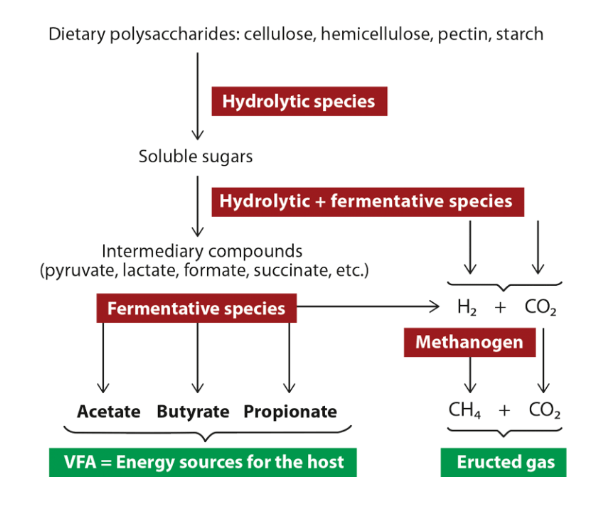Blog | Reading Time 1 minute
Ruminant Microbiota Insight: Part 2 – Rumen fermentation
Rumen fermentation is a process that converts ingested feed into energy sources for the host. Fiber scratches the rumen wall to start a series of contractions.
These contractions lead to rumination, which is the process that physically breaks down the fiber source. Feed is then regurgitated, chewed and swallowed usually 50-70 times during rumination before passing through to the next compartment of the stomach.
Microbial populations ferment feed and water into volatile fatty acids (VFA) and gases (methane and carbon dioxide). When fermentable carbohydrate in the diet is digested too rapidly, the bacteria will increase the production of both VFA and lactic acid.
Practical implications
To sustain growth and the activity of fibrolytic microbes, it is crucial to maintain ruminal pH above 5.8, which will prevent the decline of fiber digestion and subsequent problems.
Strategies that limit acid load, notably by competing with lactate producing bacteria, help to optimize fiber digestion.
Frequent changes in management or diet can alter the balance of the microbes and consequently, the profile of the fermentation end products.
For more information on rumen fermentation, visit: https://ruminantdigestivesystem.com
Published Nov 25, 2019 | Updated May 30, 2023
